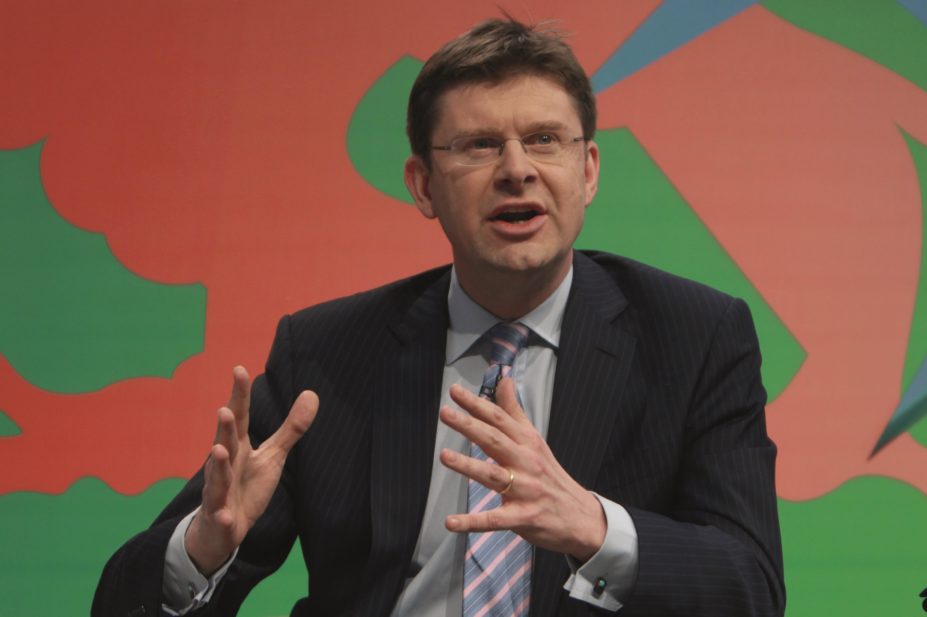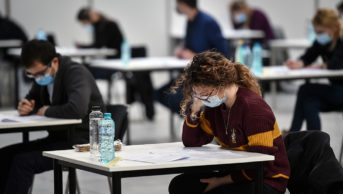
Richard Gardner / Rex Features
A government refusal to introduce controls on the number of pharmacy students in the UK has been met with disappointment by pharmacy organisations. However, plans to make pharmacy a five-year integrated degree will press on, a move that has been welcomed.
An analysis of responses to a 2013 consultation has been released by the Higher Education Funding Council for England (HEFCE)[1]
, and found that the majority of those surveyed supported the introduction of some form of student intake control.
However, Greg Clark, the government’s minister for science, universities and cities, vetoed this option in a letter to HEFCE on 1 September 2014. “I have decided that it is not necessary to introduce a specific student number control for pharmacy.” The minister says that this is in line with wider government policy to remove student number controls wherever possible.
Removing limits on student numbers across higher education became government policy in autumn 2013, around the same time as the consultation on pharmacy student numbers — a joint exercise between HEFCE and Health Education England (HEE) — was launched. HEFCE is responsible for distributing funding to universities in England and is part of the Department of Business, Innovation and Skills, while HEE acts on behalf of the NHS to oversee the training of healthcare professionals and is part of the Department of Health (DH).
The consultation, initiated by Clark’s predecessor, David Willets, was in response to a comprehensive analysis by the Centre for Workforce Intelligence, which predicted that there will be an oversupply of between 11,000 and 19,000 pharmacists by 2040. The number of pre-registration trainees has grown from 1,534 in 2003 to 2,842 in 2013 and the number of schools of pharmacy in the UK continues to grow, now standing at 27. There are fears of a shortage of pre-registration training places for pharmacy graduates and a high level of unemployment.
Three options were proposed in the consultation: maintaining the status quo and allowing the free market to determine numbers; introducing an intake control on student numbers; or creating a break-point in the degree that would only allow a certain number of students to progress to become pharmacists.
Dave Branford, chairman of the English Pharmacy Board of the Royal Pharmaceutical Society (RPS), says the responses to the consultation show that most stakeholders are unconvinced that patient care or the student interest would be best served by allowing the market to continue to determine outcomes, or by creating a break-point during study. “The RPS will be seeking an early meeting with officials to understand the basis for such a disappointing decision.”
Mark Koziol, chairman of the Pharmacists’ Defence Association, says the decision not to cap numbers is part of a wider problem. “There’s no workforce vision for pharmacy, so any decision would have been arbitrary.” Koziol says the original consultation was “all about supply” and did not address demand.
He adds that the DH has failed to identify, “in anything other than in the most vague and wishy-washy” terms, exactly what it is that pharmacists will be doing in the future. Koziol suggests that the oversupply of pharmacists will be exacerbated by the current rebalancing legislation, which he predicts will transfer responsibilities from pharmacists to technicians. He argues that remote supervision will mean pharmacists are no longer required in community pharmacies.
Rob Darracott, chief executive of Pharmacy Voice, disagrees but says that more work is needed to define how pharmacists and technicians should work together. Darracott is also disappointed with the decision not to cap student numbers. “We’re talking about a health profession — the vast majority of 18-year-olds going to study pharmacy are expecting to come out the other side as practising pharmacists”.
Darracott says that the introduction of a five-year integrated degree has the potential to mitigate some of the problem. Currently, the pharmacy degree is a four-year course, with a subsequent preregistration training year. The proposed plan is to integrate this work-based training into a five-year degree. If this is introduced it will “have to bring in an element of control over student numbers”, says Darracott, because universities will have to work with employers to guarantee training for their students.
HEE now intends to prioritise the reform of planning, funding and delivery of pharmacy education because of the “now well-embedded direction of travel in the NHS to use the knowledge and skills of pharmacists more effectively”.
Proposed changes to the pharmacy degree were not mentioned in the minister’s letter. He instead addresses the current lack of pre-registration training places that are open to pharmacy graduates. “It is necessary for universities to ensure that prospective pharmacy students are aware that in studying pharmacy they are not guaranteed a post-graduation pre-registration year place,” he writes, adding that he will ask HEFCE to work with HEE to ensure prospective students are fully aware of this before applying for courses.
The British Pharmaceutical Students’ Association hopes the minister’s comments will not negatively impact on the continued development of the five-year degree proposal. It also expressed disappointment in the decision not to cap student numbers.
One organisation in favour of the decision is the Pharmacy Schools Council. It says it is working with stakeholders across the pharmacy sector to develop a vision of what the role of the pharmacist will be in the future, building on the plans for a five year degree.
The General Pharmaceutical Council (GPhC) did not comment on the decision about student intake controls, but said it looks forward to playing a part in progressing pharmacist education and training, particularly around the introduction of a five year integrated degree. “In early 2015, the GPhC will be undertaking a pre-consultation exercise on the regulatory standards for the initial education and training of pharmacists.”
HEE indicates that under the reforms emphasis will be placed on more pharmacists becoming independent prescribers. Darracott, who was involved in developing the proposals, explains that the education reforms were looked at with a view to how “pharmacists could be independent prescribers from day one”.


